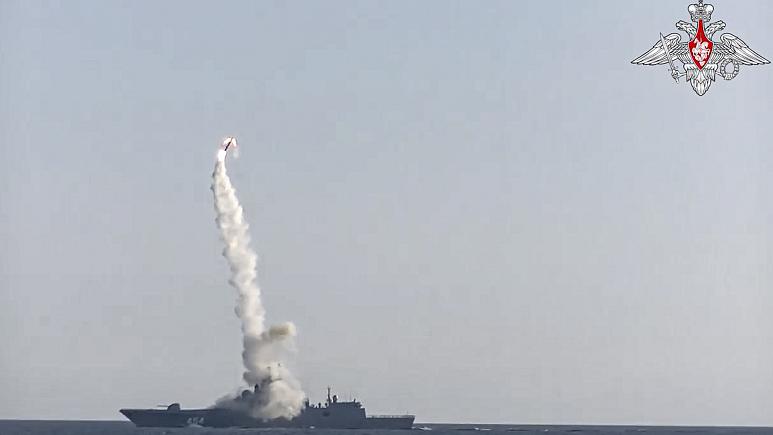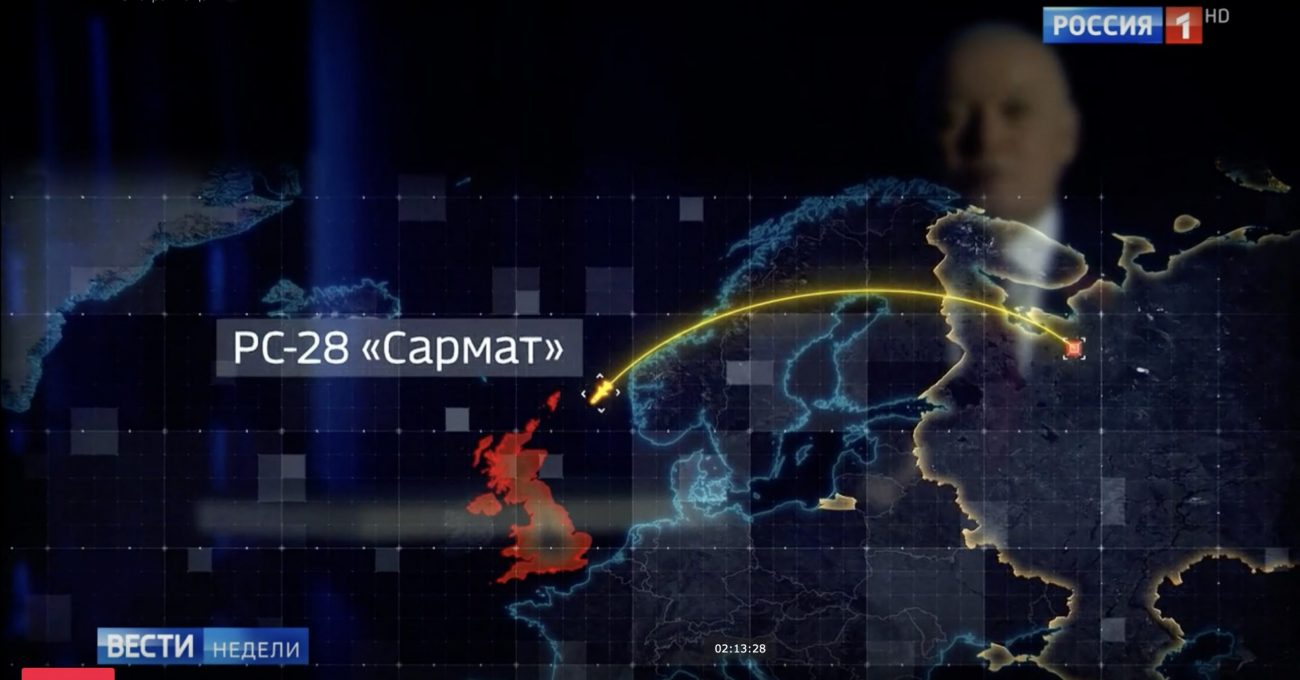Russia fired a hypersonic cruise missile Tsirkon (Zircon) from Admiral Gorshkov frigate in the Barents Sea and successfully hit the target, the Russian Defense Ministry told reporters on Saturday.
“Today, the lead Project 22350 frigate Admiral Gorshkov fired a Tsirkon hypersonic cruise missile at a sea target position in the White Sea from the Barents Sea,” the ministry said “According to objective control data, the Tsirkon hypersonic cruise missile successfully hit a sea target located at a distance of around 1,000 km,” the ministry said.
Zircon Hypersonic Missile
Earlier, Russia said it was developing a new system to launch one of its much-touted Tsirkon (Zircon) hypersonic missiles, which is scheduled to be operational by the end of the year, reported state-run media outlet Tass.
In A Massive Policy Change, Japan Permits Export Of Its Fighter Jets, Missiles To 12 Countries Including India – Reports
According to the report, NPO Mashinostroyeniya in Reutov (near Moscow) is working on an improved coastal defense missile system for the Tsirkon hypersonic missile.
A military source told the agency that the system would be able to strike both ground and sea-based targets. This would offer it similar capabilities as its predecessor, the Bastion, which uses Oniks supersonic anti-ship cruise missiles.
While there were aviation and sea-based variants of the Tsirkon, Anatoly Svintsov, deputy general director of NPO Mashinostroeniya, told the Zvezda military TV channel that his company had been directed to “intensify work on the creation of a marine version of the rocket.”

Russia has made significant advancements in hypersonic weapon technology, which are quicker and more agile than conventional missiles. These missiles are difficult to intercept by existing defense systems.
Recently, Russia also claimed to have put the 3M-54 Kalibr cruise missiles onto two Varshavyanka submarines in the Black Sea. Furthermore, Moscow had announced in March that it had used hypersonic missiles in Ukraine, hitting a military depot in the Ivano-Frankivsk region in the country’s west using the deadly Kh-47M2 Kinzhal missile.
As previously reported by the EurAsian Times, Moscow also successfully tested the nuclear-capable intercontinental ballistic missile (ICBM) Sarmat, also known as Satan II. This is viewed as a new threat to the US and its western allies.
Moscow even threatened to wipe out Britain in “200 seconds” with its RS-28 Sarmat hypersonic nuclear missile.

The “Invincible” Tsirkon (Zircon) Missile
The Tsirkon multi-purpose hypersonic missile designed to strike sea and ground targets has a range of over 1000 kilometers and can travel at a speed of Mach 9 (11,113 kilometers per hour). Tsirkon and other cutting-edge armaments have been described as “invincible” by President Putin.

Last year, Russia declared that the Tsirkon (Zircon) had entered the mass production phase. Even sophisticated American defenses would be unable to intercept the missile. Hypersonic weapons, such as Russia’s 3M22 Tsirkon, have a low atmospheric-ballistic trajectory, enabling them to bypass traditional anti-missile defense systems.
The missile with a range of up to 1,000 kilometers uses upgraded fuel and moves so fast that the air pressure in front of the weapon creates a plasma cloud that traps radio waves, making it almost invisible to radar systems.

Russia’s commitment to hypersonic weapons is most probably a counter to the United States’ technological advantage at sea. The US Navy intends to keep a fleet of 12 nuclear-powered aircraft carriers, while Russia has one and dispatches it with a tugboat if its engine malfunctions.
Zircon missiles are believed to be capable of sinking even the most advanced American aircraft carriers. Experts argue that even if it (defense systems) detects a Zircon missile at 100 miles, it would have just one minute to respond.
The Tsirkon missile is deemed to be a hybrid cruise missile and ballistic missile, as opposed to pure hypersonic missiles that rely on scramjets. Experts have warned that it may be able to overwhelm the US Aegis Combat System easily.
In the last two and a half years, Moscow has announced that it has tested the Tsirkon missile several times from its Northern Fleet flagship Admiral Gorshkov.
In October last year, Russia’s nuclear-powered submarine Severodvinsk launched Zircon hypersonic missiles from its surface and submerged positions in the White Sea for the first time.
- Contact the author at ashishmichel@gmail.com
- Follow EurAsian Times on Google News




